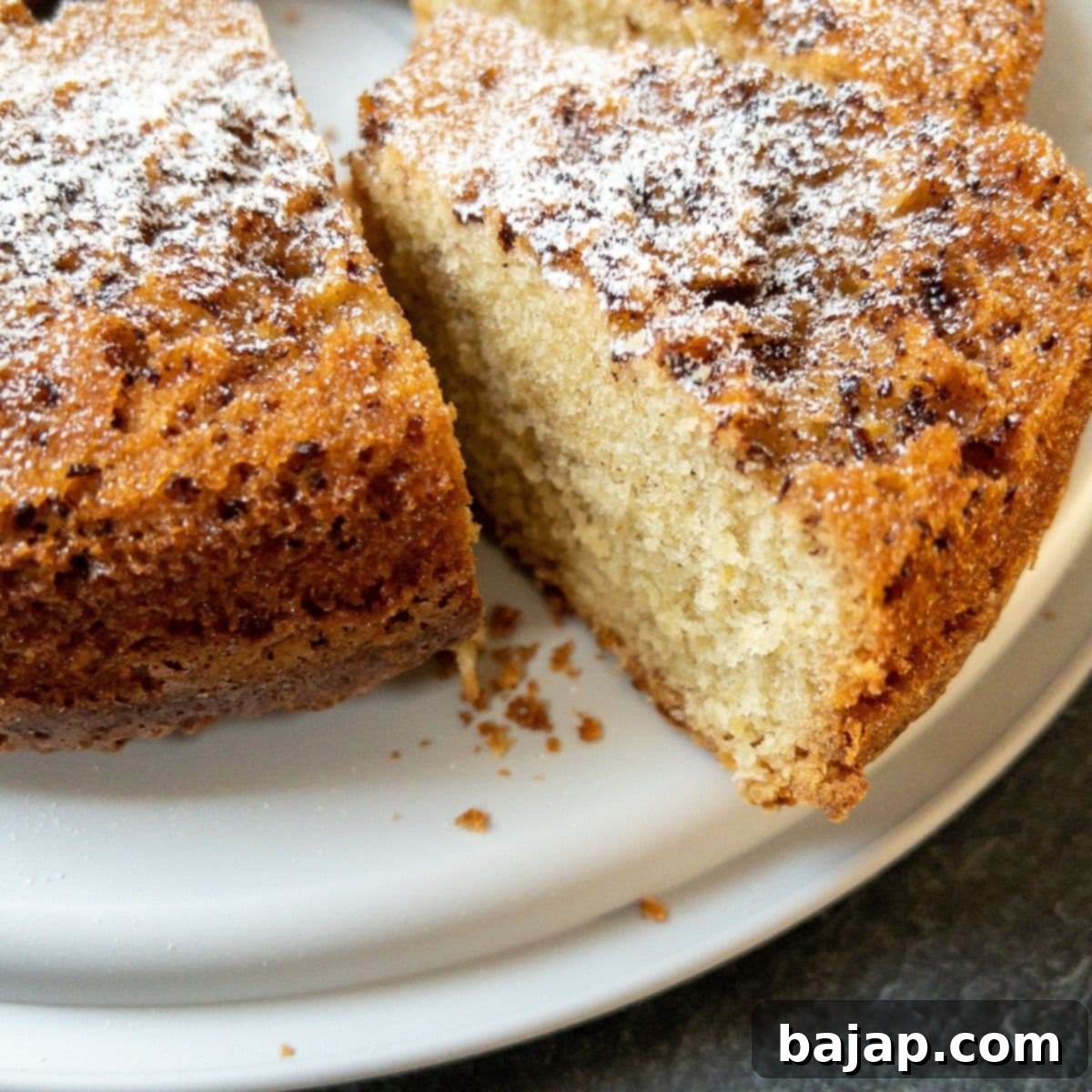Delightfully Fluffy Potato Flour Eggnog Cake: A No-Butter Recipe for Ultimate Lightness
Prepare to be enchanted by a cake of the most delicate kind! This exquisite **Potato Flour Eggnog Cake** redefines lightness and fluffiness, offering a truly unique texture that will melt in your mouth. Crafted from a harmonious blend of **potato flour** and **wheat flour**, generously enriched with a decadent portion of rich **eggnog** (we highly recommend using your homemade eggnog for an unparalleled flavor!), this recipe is a true marvel. What’s even better? Thanks to the clever addition of oil, this cake remarkably requires **no butter**, making it wonderfully moist and irresistibly delicious!
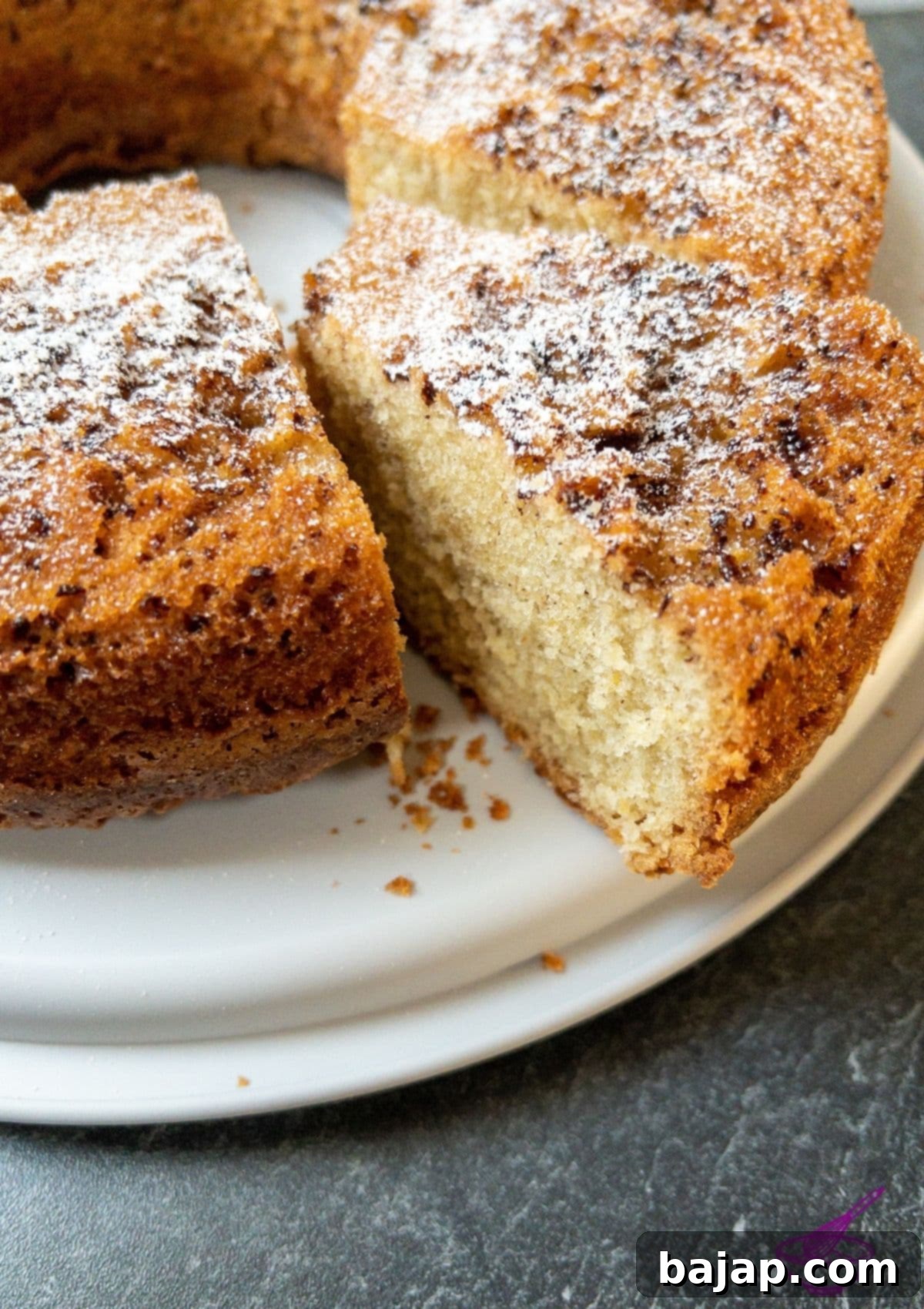
This particular **eggnog cake** truly stands out with its exceptionally **fluffy** and **light texture**. We’ve seen it disappear from plates faster than any other cake we’ve ever baked – a testament to its irresistible charm among friends and family! The unique combination of flours and a generous amount of eggnog creates a crumb that is both delicate and moist, offering a delightful contrast to denser cakes.
If you’re someone who simply can’t get enough of the rich, creamy flavor of **eggnog**, we highly recommend pairing a slice of this cake with a warm, comforting eggnog coffee. Or, for even more delightful inspiration, explore our wide array of eggnog recipes to satisfy all your cravings. This cake isn’t just a dessert; it’s an experience!
As wonderfully gorgeous as this cake turned out, I do have a little **confession** to share from my baking journey. While preparing this particular batch, I made a rather **silly mistake**. Thankfully, it **did not negatively affect the final result** of the cake’s taste or texture, but I feel it’s important to **make you aware** of it so you can avoid a similar mishap!
I had some delicious chocolate chips leftover and thought they would be a fantastic addition to this already heavenly cake. Once the dough was perfectly mixed and ready, I carelessly stirred in the chocolate chips without paying close attention to the dough’s consistency. To my dismay, they simply sank straight to the bottom of the mixing bowl. It was too late to reverse the process! 😲
The truth is, this cake dough has such a beautifully fluid and light consistency that it is absolutely not suitable for incorporating heavy additions like chocolate chips. They are simply too dense, and the delicate dough cannot suspend them. Since there was nothing I could do to fix it at that point, I proceeded with baking as usual.
At the end of the baking time, as expected, all the chocolate chips had settled at the very bottom, creating a thick, melted layer. However, by a stroke of luck, this wasn’t a problem for the cake itself! Instead, it gave the bottom a surprisingly unique, almost brownie-like texture, which some found quite appealing. But honestly, for this specific elegant cake, you truly don’t need any additional mix-ins. To prevent wasting your precious chocolate or encountering any sinking issues, it’s best to simply leave them out altogether and enjoy the pure, unadulterated eggnog flavor!
This incident also highlights a valuable lesson: understanding your dough’s consistency is key to successful baking. For this incredibly light **potato flour eggnog cake**, its magic lies in its simplicity and ethereal texture. Any heavy additions might compromise its signature lightness.
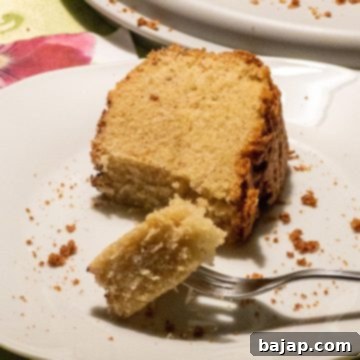
Potato Flour Cake with Eggnog
Nora
Save RecipeSaved!
Pin Recipe
Equipment
-
1 Spring Bundt pan
-
Mixing bowls
-
Kitchen machine or Electric handmixer
-
Cooling Rack
-
Close meshed sieve
-
Tablespoon
-
Dough scraper
Ingredients
- 5 Large Eggs
- 2 ¼ cups Powdered Sugar (also known as Confectioners’ Sugar)
- 1 ¼ teaspoon Vanilla Sugar (or 1 tsp vanilla extract)
- 1 ⅙ cups Neutral Oil (such as Olive, Grapeseed, or Canola oil for moisture without butter)
- 1 ⅙ cups Eggnog (for that rich, creamy flavor – homemade or quality store-bought)
- 1 cup All-Purpose Flour
- 1 cup Potato Flour (key for the delicate texture!)
- 1 teaspoon Baking Powder
- Butter or Baking Spray to grease the pan
- Powdered sugar for final dusting
Instructions
-
Begin by preheating your oven to 160 °C (320 °F) with top and bottom heat. This ensures your oven is at the correct temperature when the cake is ready to bake.
-
In a separate mixing bowl, prepare your dry ingredients. Thoroughly mix together 1 cup all-purpose flour, 1 cup Potato flour, and 1 teaspoon Baking Powder. Set this mixture aside, as you’ll be adding it later.1 cup all-purpose flour, 1 cup Potato flour, 1 teaspoon Baking Powder
-
Take a large mixing bowl (or the bowl of your stand mixer). Sift 2 ¼ cups Powdered Sugar into it through a close-meshed sieve. Sifting ensures a lump-free, finer texture for your cake.2 ¼ cups Powdered Sugar
-
Next, add 1 ¼ teaspoon Vanilla Sugar (or vanilla extract) and 5 Eggs to the sifted sugar. Beat these ingredients vigorously until the mixture becomes wonderfully light, fluffy, and creamy. This step is crucial for incorporating air and achieving the cake’s signature texture.1 ¼ teaspoon Vanilla Sugar, 5 Eggs
-
Now, gently incorporate 1 ⅙ cups Oil (your chosen neutral oil) and 1 ⅙ cups Eggnog into the egg mixture. Once these are combined, carefully fold in the dry flour-baking-powder mixture that you prepared earlier. Mix until just combined – overmixing can lead to a dense cake. Remember, the dough will have a **liquid consistency**, which is perfectly normal for this light and delicate cake!1 ⅙ cups Oil, 1 ⅙ cups Eggnog
-
Before pouring the batter, thoroughly grease your chosen springform pan with butter or baking spray to prevent sticking and ensure a clean release. Once greased, pour the fluid cake batter evenly into the prepared pan.
-
Place the springform pan on the middle shelf of your preheated oven. Bake for approximately 80-90 minutes at 160 °C (320 °F). Baking time may vary slightly depending on your oven.
-
Towards the end of the baking time, perform a doneness test: insert a wooden skewer or toothpick into the center of the cake. If it comes out clean with no wet batter attached, your **eggnog cake** is perfectly baked and ready! Carefully remove the cake from the oven and allow it to cool completely on a wire cooling rack before attempting to remove it from the pan. This prevents it from breaking.
-
Once completely cool, gently turn the cake out of the baking pan. For a beautiful finish, lightly dust the top with a generous layer of fresh powdered sugar just before serving. Enjoy this delicate and flavorful creation!
Nutrition values are estimates only, using online calculators. Please verify using your own data.

Why This Eggnog Cake is a Must-Try
This isn’t just another cake; it’s a testament to simple ingredients coming together to create something truly magical. The unique combination of **potato flour** and **all-purpose flour** is the secret behind its signature delicate and incredibly light texture. Potato flour contributes to an almost melt-in-your-mouth quality that regular flour alone cannot achieve. And with a generous amount of **eggnog**, every bite is infused with a rich, creamy, and subtly spiced flavor that is comforting and festive.
Furthermore, the fact that this cake requires **no butter** makes it stand out. Using a neutral oil ensures a wonderfully moist crumb while keeping the cake light and allowing the distinct flavor of the eggnog to shine through without being overshadowed by butter. It’s a surprisingly simple recipe that yields professional-bakery results!
Understanding the Magic of Potato Flour in Baking
Many home bakers might shy away from using potato flour, but it’s a game-changer for achieving specific textures. In this **eggnog cake**, potato flour plays a crucial role in creating its renowned light and fluffy consistency. It’s not merely a thickener; it helps to bind moisture and creates a tender crumb that feels incredibly delicate on the palate. When combined with regular wheat flour, it provides a perfect balance, preventing the cake from becoming too dense or too crumbly.
For those new to baking with potato flour, don’t confuse it with potato starch (we’ll dive into that difference shortly!). Potato flour contains protein and fiber, much like wheat flour, but it has a unique ability to absorb liquids differently, contributing to a moistness that lingers. This makes it an ideal ingredient for cakes where a tender, delicate texture is desired, especially when paired with a rich liquid like eggnog.
Baking Success: Essential Tips for Your Eggnog Cake
- **Room Temperature Ingredients:** Ensure your eggs and eggnog are at room temperature. This helps them emulsify better with the oil and sugar, creating a smoother, more uniform batter and a finer crumb in the final cake.
- **Do Not Overmix:** After adding the flour mixture, mix the batter only until the dry ingredients are just combined. Overmixing can develop the gluten in the wheat flour, leading to a tougher, less fluffy cake.
- **Grease Your Pan Generously:** As this is a delicate cake, properly greasing and lightly flouring your springform pan (even though the recipe says just grease) is crucial to prevent sticking and ensure the cake releases cleanly once baked and cooled.
- **Oven Thermometer:** Oven temperatures can vary. Using an inexpensive oven thermometer can help you ensure your oven is truly at 160 °C (320 °F) for consistent baking results.
- **The Whipping Tip:** The “Top Tip” mentioned earlier is key: whipping the eggs, powdered sugar, and vanilla sugar until truly creamy and light is best achieved with a good quality hand mixer rather than just a food processor. This step incorporates essential air, contributing significantly to the cake’s fluffiness.
- **Cool Completely:** Patience is a virtue when cooling this cake. Allow it to cool entirely on a wire rack before attempting to handle it or remove it from the pan. This prevents it from breaking and allows the structure to set properly.
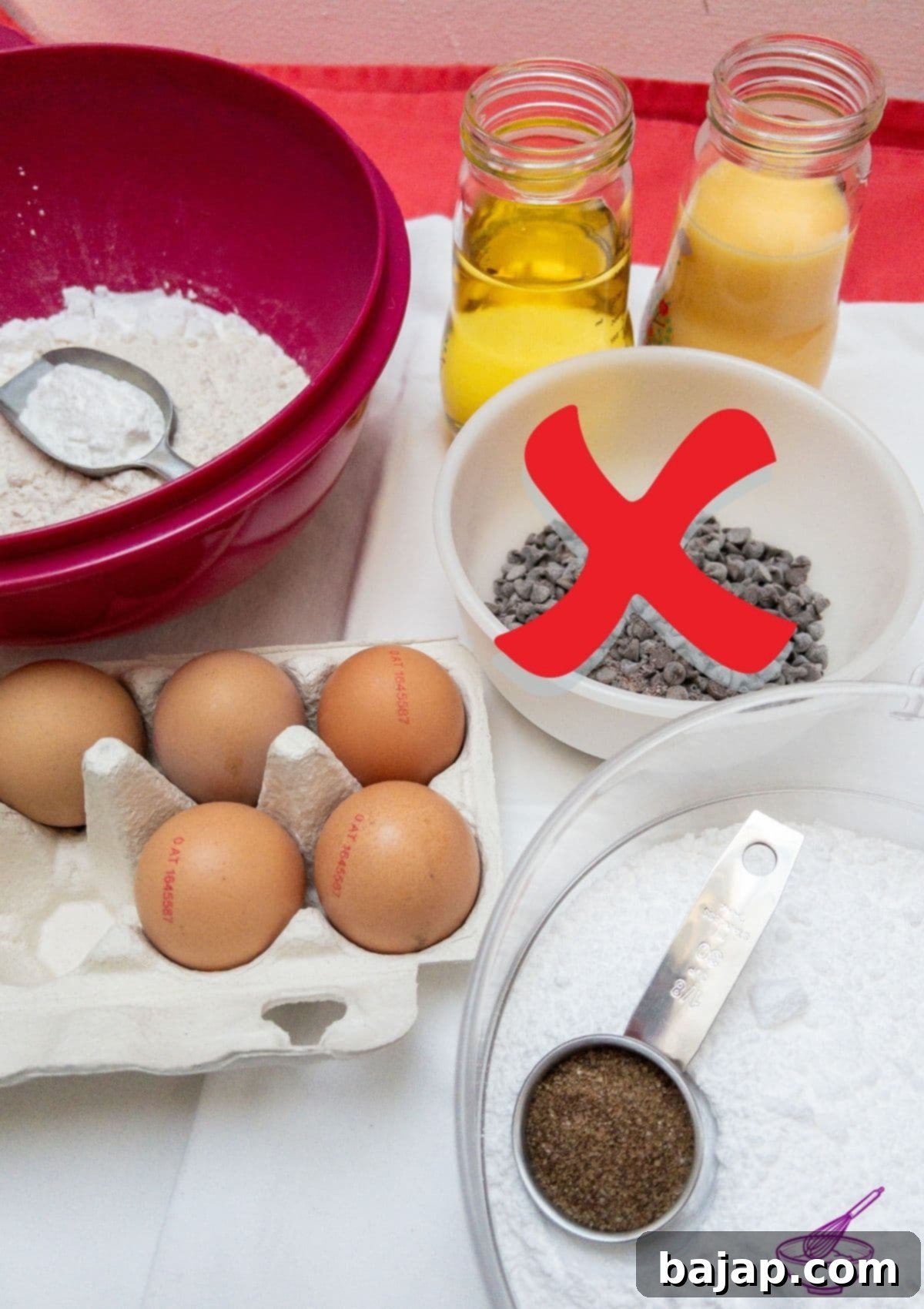
🍽 Essential Equipment for Effortless Baking
While this recipe is straightforward, having the right tools can make the process even smoother and more enjoyable. Here’s a quick rundown of the equipment you’ll need:
- Spring Bundt Pan: A 9-inch (23cm) springform Bundt pan is ideal for this cake, allowing for easy release and a beautiful presentation. Its non-stick properties are a huge plus.
- Mixing Bowls: You’ll need at least two – one for the dry ingredients and one for the wet.
- Food Processor or Electric Mixer: Essential for beating the eggs and sugar until light and creamy, which is crucial for the cake’s texture. A stand mixer works wonderfully, but a good electric hand mixer is just as effective, if not more, for the whipping stage.
- Cooling Rack: An absolute must for allowing the cake to cool evenly and prevent the bottom from becoming soggy.
- Close-Meshed Sieve: For sifting powdered sugar and ensuring your dry ingredients are lump-free, contributing to a smoother batter and finer cake crumb.
- **Tablespoon:** For accurate measurement of vanilla sugar and baking powder.
- **Dough Scraper:** Handy for folding in the dry ingredients gently without deflating the airy egg mixture.
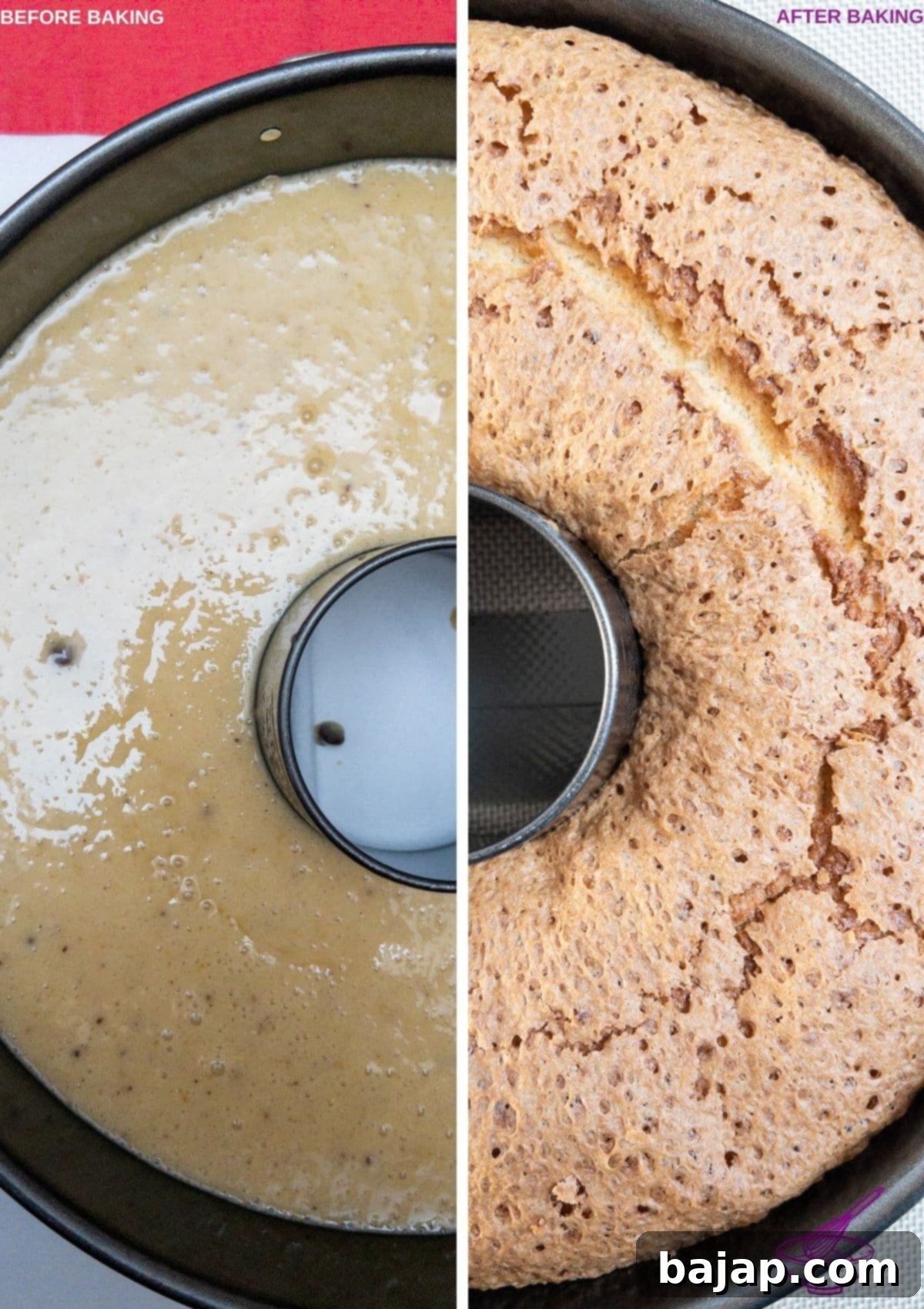
Serving Your Delicate Eggnog Cake
This beautiful **eggnog cake** is truly delightful on its own, needing very little to impress. A simple dusting of powdered sugar is often enough to highlight its elegant form and hint at the delicate flavors within. However, if you’re looking to elevate the experience, consider these simple additions:
- A Dollop of Whipped Cream: A spoonful of freshly whipped cream provides a lovely, light counterpoint to the rich eggnog flavor.
- Fresh Berries: A side of fresh raspberries, strawberries, or blueberries adds a touch of brightness and a slight tang that complements the cake beautifully.
- Light Fruit Compote: A homemade compote, perhaps with apples or pears and a hint of cinnamon, can add another layer of flavor and texture without being too heavy.
- A Sprinkle of Nutmeg: A tiny dusting of freshly grated nutmeg just before serving can enhance the traditional eggnog spice profile.
However you choose to serve it, this **fluffy potato flour eggnog cake** is guaranteed to be a crowd-pleaser! Now it’s ready to be devoured! Enjoy every delicate bite!
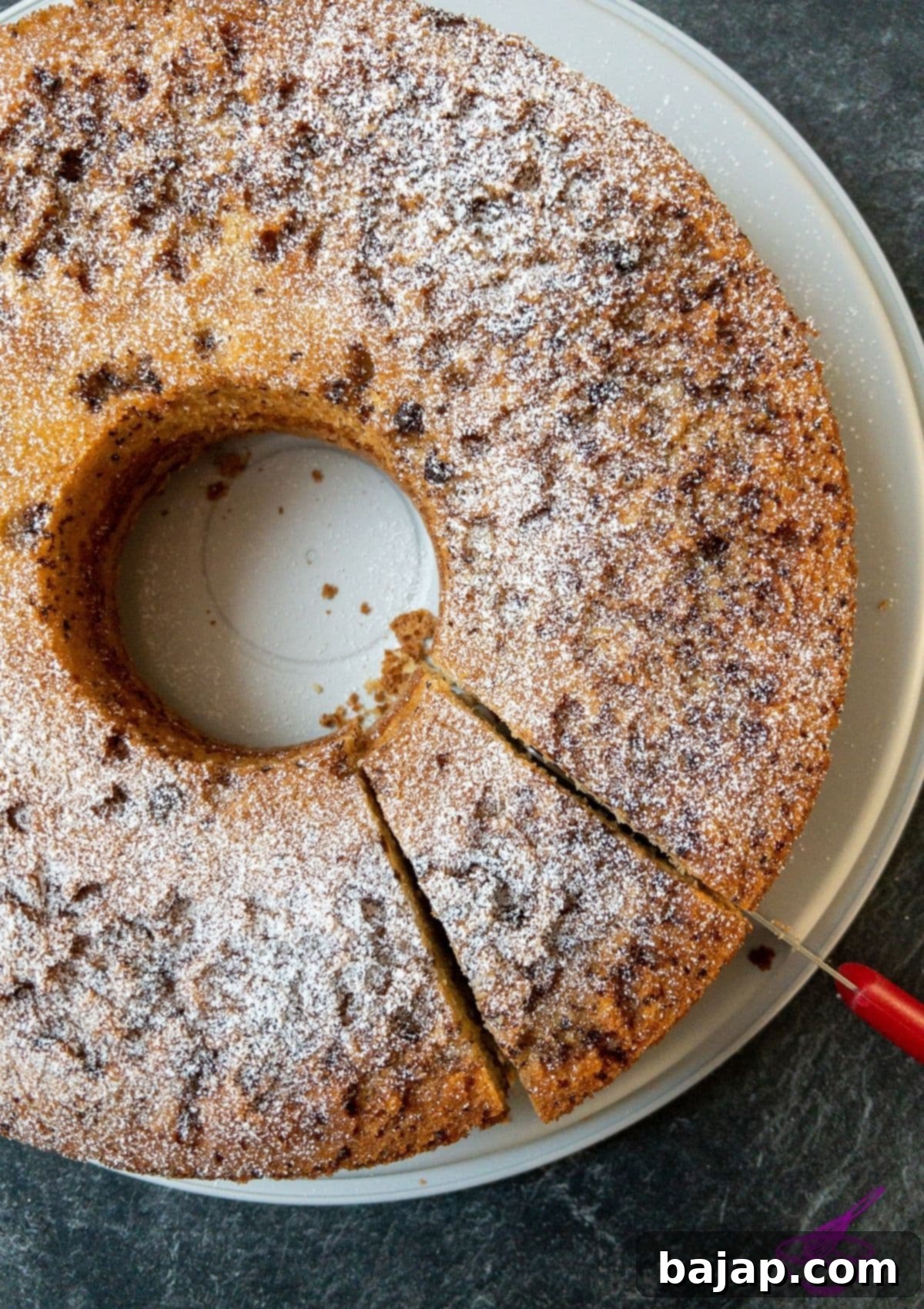
More Delicious Cake Recipes for You to Try
If you’ve enjoyed the unique lightness of this **potato flour eggnog cake**, we’re confident you’ll love exploring these other delightful cake creations:
- Six Egg White Chocolate Cake: Another light and airy option.
- Flourless Chocolate Cake: Rich, dense, and intensely chocolatey for a different experience.
- Old-fashioned Whipping Cream Bundt Cake: A classic for comforting nostalgia.
- Austrian Strawberry Sponge Cake: Light and fruity, perfect for summer.
- Ultimate Double Chocolate Bundt Cake: For serious chocolate lovers!
- Chocolate Chip Ricotta Loaf Cake: Moist and flavorful with a hint of Italian charm.
- Pumpkin Pound Cake (created by Call Me PMC): A seasonal treat for fall.
📖 Creative Variations for Your Eggnog Cake
While the classic **eggnog cake** is a star in itself, feel free to get creative and experiment with variations to suit your taste or the occasion. The beauty of this recipe lies in its adaptability:
- **Liqueur Swap:** Instead of traditional **eggnog**, you can easily substitute it with any other type of cream liqueur. Consider using a rich **Baileys Irish Cream** for a hint of whiskey, or a delightful **chocolate liqueur** for a more indulgent, cocoa-infused cake. Coffee liqueurs like Kahlua would also offer a sophisticated twist.
- **Citrus Zest:** For a brighter flavor profile, finely grate the zest of one lemon or orange into the batter along with the vanilla sugar. The citrus notes will beautifully cut through the richness of the eggnog.
- **Spice It Up:** Enhance the festive flavors by adding a pinch of ground nutmeg, cinnamon, or even a touch of cardamom to your dry ingredients.
- **Nutty Crunch (Caution Advised!):** If you desire a nutty element, finely ground nuts like almonds or pecans *could* be folded into the batter. However, use sparingly and ensure they are very fine to prevent them from sinking, similar to our chocolate chip experience. Toasting them first will bring out their flavor.
🌡️ Storage Best Practices for Your Eggnog Cake
To keep your **eggnog cake** fresh and delicious for as long as possible, proper storage is key:
- **Room Temperature:** The cake will maintain its delightful freshness for approximately five days when stored at room temperature under a cake cover or in an airtight container. This protects it from drying out and helps preserve its delicate texture.
- **Freezing for Longer Enjoyment:** Yes, you can absolutely freeze this cake! Once it has completely cooled down, wrap it tightly in cling film (plastic wrap), then in aluminum foil, or place it in a freezer-safe bag or container. This double layer of protection helps prevent freezer burn. It can be stored in the freezer for up to 2-3 months. When ready to enjoy, simply thaw it overnight in the refrigerator or at room temperature.
🥔 Potato Starch Vs Potato Flour: What Is The Difference?
It’s a common point of confusion, but **potato starch** and **potato flour** are not interchangeable in most recipes, and understanding their differences is vital for successful baking, especially for a delicate cake like this one.
What Is Potato Starch?
Potatoes are, as you know, a fantastic source of essential nutrients, primarily carbohydrates. Like many other carb-filled food items, potatoes contain a significant amount of starch. This starch is concentrated in the potato’s tuberous roots, specifically within cells that contain numerous leucoplasts. Potato starch is produced by crushing potatoes, washing the starch granules free from the cells, and then drying them into a fine, white powder.
- Texture and Use: Potato starch is a very fine, powdery substance that feels silky to the touch. It’s almost pure starch. It’s primarily used as a thickener for sauces, gravies, and soups because it creates a clear, glossy finish and prevents curdling. In baking, it can be used to lighten the texture of gluten-free baked goods or to make cakes more tender, but it doesn’t provide the same structure as potato flour.
- Gluten-Free: It is naturally gluten-free.
What Is Potato Flour?
In contrast, **potato flour** is made from whole, dried potatoes that have been cooked, dried, and then ground into a fine powder. This means it contains all the components of the potato, including its fiber, protein, and some starch, not just the isolated starch.
- Texture and Use: Potato flour has a heavier, denser texture than potato starch and a more distinct potato flavor. It is a good absorbent and can add moisture and density to baked goods, acting more like a traditional flour. It’s excellent for adding tenderness and moisture to yeast breads, cookies, and, as we’ve seen, light cakes like this **eggnog cake** where a delicate, moist crumb is desired.
- Gluten-Free: While made from potatoes, its composition and behavior in recipes are different from potato starch. It is also naturally gluten-free.
For this **Potato Flour Eggnog Cake**, using actual potato flour (not starch) is crucial for achieving the perfect balance of lightness, moisture, and a tender, delicate crumb. The fiber and protein in potato flour provide a subtle structure that potato starch simply cannot.
More Delicate Cake Recipes to Explore
If you’re fond of cakes with a light and airy texture, these recipes will surely inspire your next baking adventure:
- Six Egg White Chocolate Cake
- Old-fashioned Whipping Cream Bundt Cake
- Austrian Strawberry Sponge Cake
- Ultimate Double Chocolate Bundt Cake
- Chocolate Chip Ricotta Loaf Cake
- Chestnut Flour Cake
- Swiss Roll Cake (created by siftandsimmer.com)
If you make this delightful **Potato Flour Eggnog Cake** recipe, we’d absolutely love to hear from you! Let us know how you liked it by giving it a ★★★★★ star rating and leaving a comment below. Your feedback is truly awesome and helps other bakers! You can also sign up for our Newsletter to receive weekly delicious homemade recipes directly to your inbox, or follow me on Pinterest or Instagram and share your creation with us. Just tag me **@combinegoodflavors** and use the hashtag **#combinegoodflavors**, so I don’t miss your culinary masterpiece!
🍰 You might also like
- Old-fashioned Whipping Cream Bundt Cake
- How to Make a Ricotta Vanilla Cream Cake
- The Ultimate Double Chocolate Bundt Cake
- Fresh Strawberry Sponge Cake
⛑️ Food Safety Guidelines for Home Baking
Ensuring food safety in your kitchen is paramount, especially when baking. Follow these essential guidelines to keep your culinary creations safe and enjoyable:
- **Minimum Internal Temperature:** Always cook foods that contain eggs (like custards or baked goods if they have a liquid center) to a minimum internal temperature of 165 °F (74 °C). Use a food thermometer to verify.
- **Separate Utensils:** Avoid cross-contamination by never using the same utensils on cooked food that previously touched raw ingredients, especially raw eggs or meat.
- **Hand Washing:** Wash your hands thoroughly with soap and warm water before and after handling raw ingredients, and after any interruption during cooking.
- **Temperature Danger Zone:** Do not leave perishable foods, including prepared batter or baked goods that contain dairy or eggs, sitting out at room temperature for extended periods (typically more than two hours). This is the “danger zone” where bacteria can multiply rapidly.
- **Never Leave Cooking Unattended:** Always keep an eye on food cooking in the oven or on the stovetop to prevent burning or other hazards.
- **High Smoke Point Oils:** When baking with oil, choose varieties with a high smoke point (like grapeseed, canola, or certain types of olive oil) to avoid harmful compounds that can form when oil breaks down at high temperatures.
- **Good Ventilation:** Always ensure good ventilation in your kitchen, especially when using a gas stove, to prevent the buildup of fumes.
For further comprehensive information and resources on safe food handling practices, please refer to the official guidelines provided by the FDA (Food and Drug Administration).
